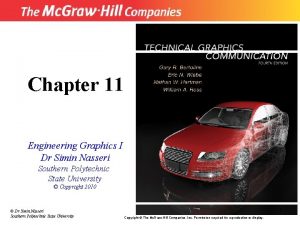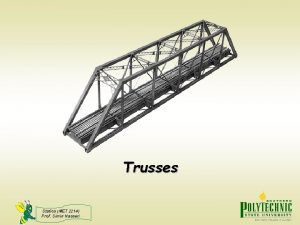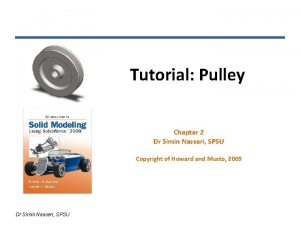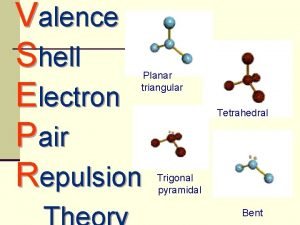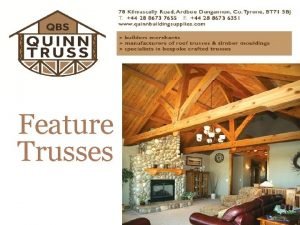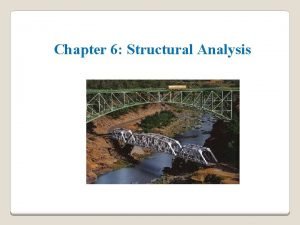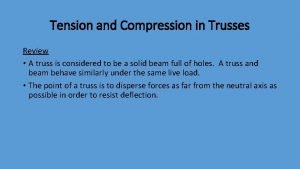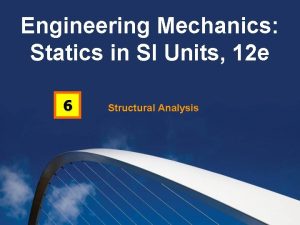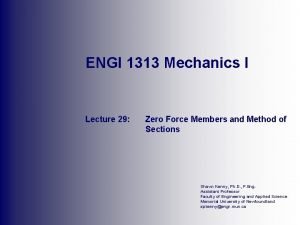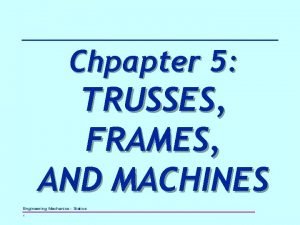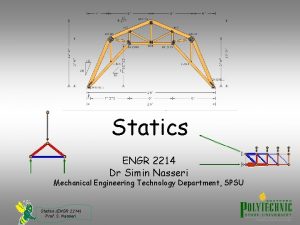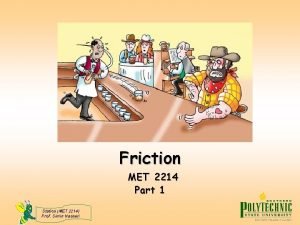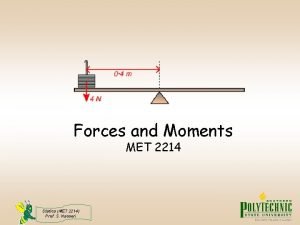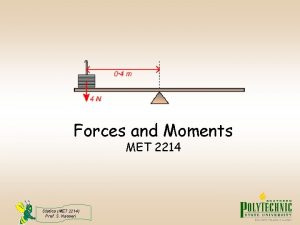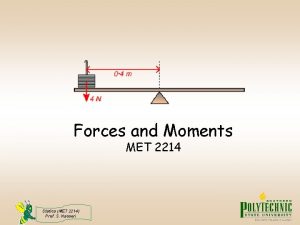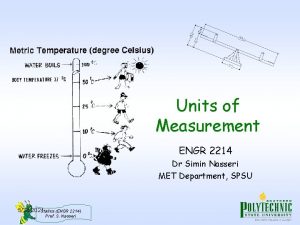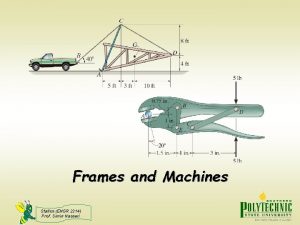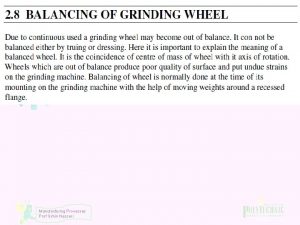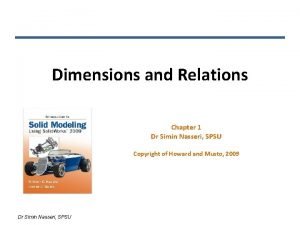Trusses Statics MET 2214 Prof Simin Nasseri Planar













- Slides: 13

Trusses Statics (MET 2214) Prof. Simin Nasseri

Planar Trusses A Truss is a structure composed of slender members (two-force members) joined together at their end points. Joints are modeled by smooth pin connections. Members are either under tension or compression. Joints are usually formed by bolting or welding the members to a common plate, called a gusset plate, or simply passing a large bolt through each member. Statics (MET 2214) Prof. Simin Nasseri

Basic Truss Element When all members of a truss lie in a single plane, that truss is planar. A plane truss is rigid if it does not change shape when subjected to a general system of forces at it joints. The truss must maintain its shape and remain a rigid body when detached from it supports. The simplest stable or rigid form of a truss is a triangle, which is the basic truss element: Statics (MET 2214) Prof. Simin Nasseri

Rigid Truss To prevent collapse, the form of the truss must be rigid. For example in the following figure, add member AC to stabilize the truss: Statics (MET 2214) Prof. Simin Nasseri

Simple Truss The basic truss ABC can be extended by adding new members BD and CD to the existing joints B and C and connecting them to form a new joint D. Providing that D does not lie on a line through BC the new truss will be rigid. Further extend the basic truss by repeating this process. A truss constructed by this procedure is called a simple truss. C A Statics (MET 2214) Prof. Simin Nasseri D B E

Type of Trusses There are two types of trusses: Roof trusses, and Bridge trusses. The following table shows some of the roof trusses: Warren English or Howe Statics (MET 2214) Prof. Simin Nasseri

Bridge Trusses W P H a r o r a w r t e e t n Statics (MET 2214) Prof. Simin Nasseri

Statically Determinate Truss A simple truss is formed by taking the basic truss element and adding two members and one joint. If the number of joints is represented by j, the number of reaction forces by r, and the number of members by m, then the following formulas show which type of truss we have: If a simple plane truss (r=3), is statically determinate, then: m = 2 j – 3 Statics (MET 2214) Prof. Simin Nasseri

Statically Determinate Truss Unbraced truss 8<2(6)-3 Truss instability Braced truss 9=2(6)-3 Statics (MET 2214) Prof. Simin Nasseri

Examples Statically Determinate: m = 7 (members) j = 5 (connection joints) r = 3 (two for pin and one for roller) m = 2 j - r Statically Indeterminate: m=8 j=5 r=3 m > 2 j - r Statically Unstable: m=6 j=5 r=3 m < 2 j - r Statics (MET 2214) Prof. Simin Nasseri

Trusses Part 2 Statics (MET 2214) Prof. Simin Nasseri

Analysis of Trusses Truss Analysis External equilibrium To find the reaction forces Internal equilibrium To find the force in each member Method of joints Statics (MET 2214) Prof. Simin Nasseri Method of sections

External Equilibrium Determine the support reactions in the joints of the following truss. Statics (MET 2214) Prof. Simin Nasseri
